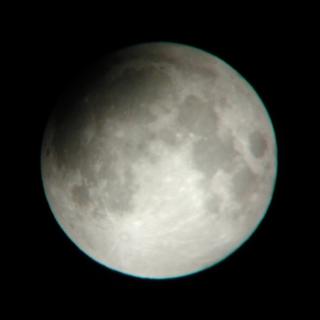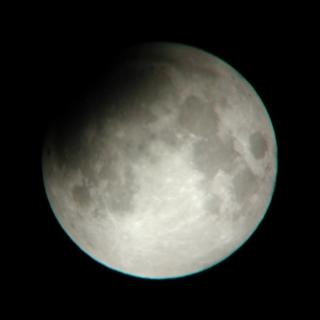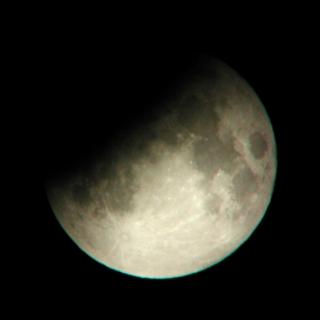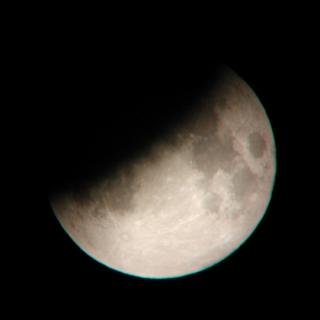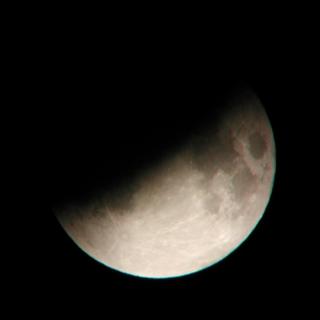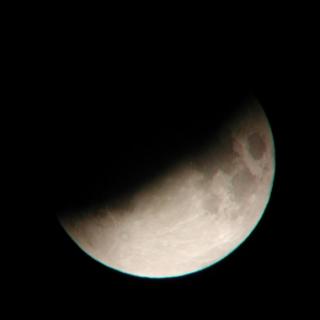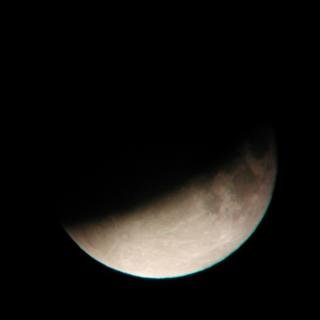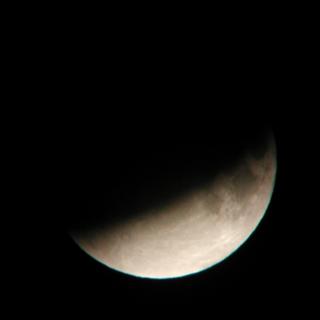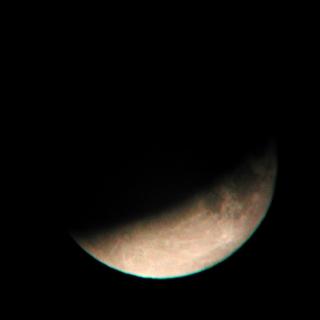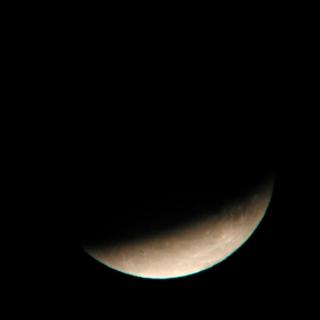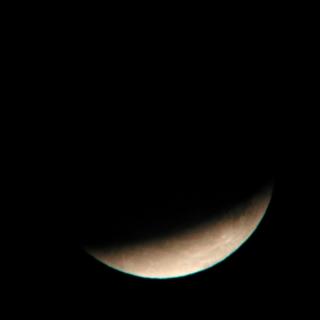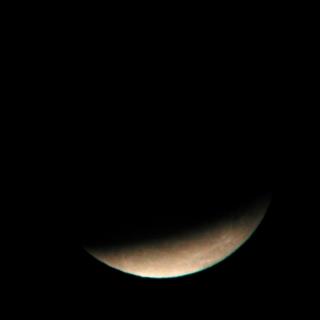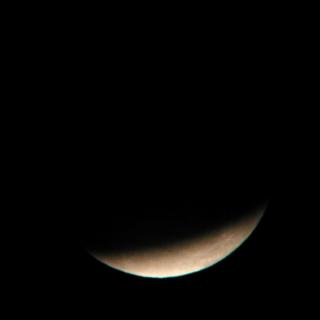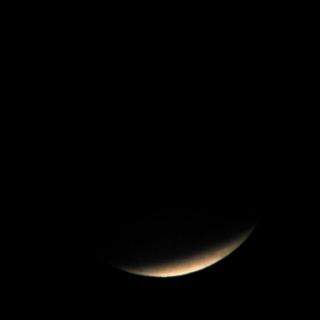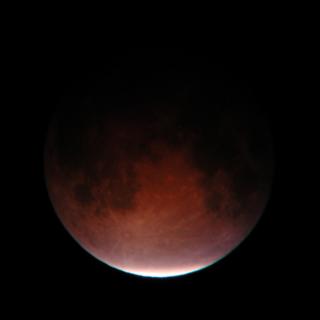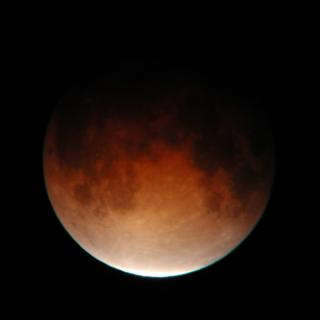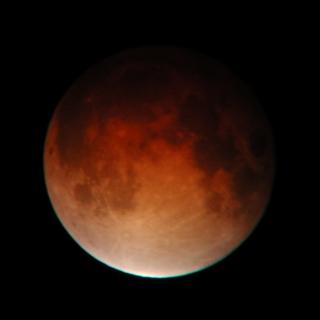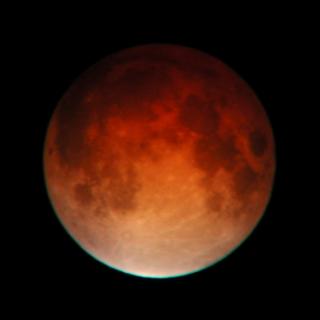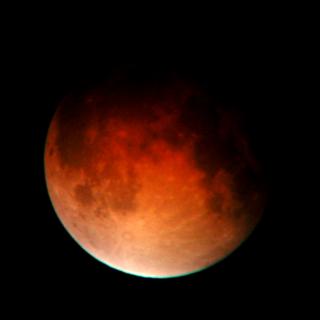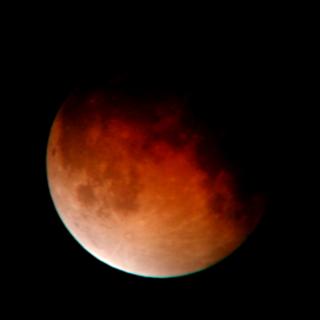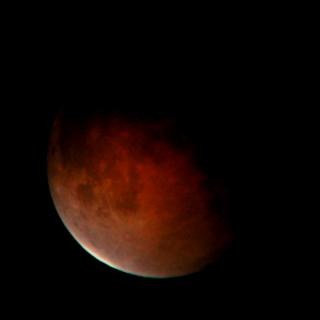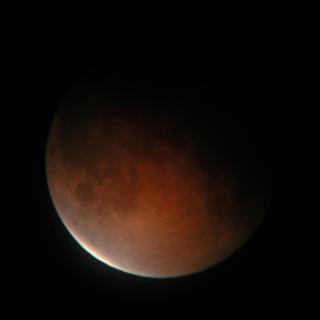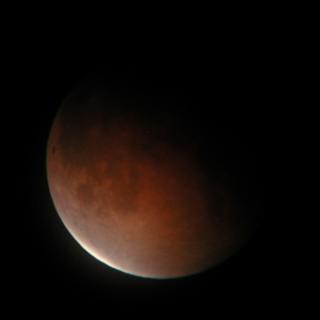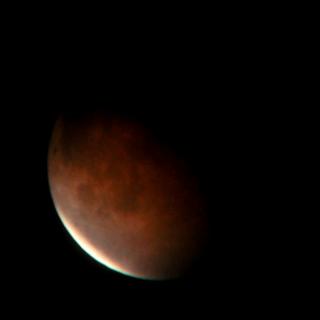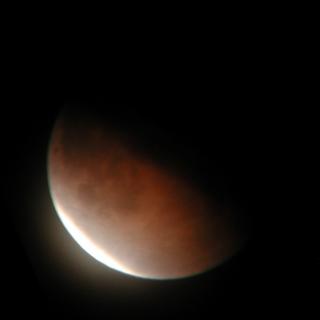 the year, the sky was clear from the start of the eclipse
until just before the end of totality, when a light high
altitude haze began to form. The air was extremely turbulent,
however, and "seeing" was marginal--telescopic views of the
Moon were blurred by the boiling atmosphere except for
fleeting moments of calm when lunar features became
sharp.
the year, the sky was clear from the start of the eclipse
until just before the end of totality, when a light high
altitude haze began to form. The air was extremely turbulent,
however, and "seeing" was marginal--telescopic views of the
Moon were blurred by the boiling atmosphere except for
fleeting moments of calm when lunar features became
sharp.
To photograph the eclipse, I set up my Brandon 80mm apochromatic refractor on its simple wooden tripod and altazimuth non-driven mount with mechanical slow motions. I attached an Olympus C-3040 digital camera to the telescope with a ScopeTronix Digi-T adaptor, which couples a variety of digital cameras to many popular 1¼ inch eyepieces. I used a 15mm ScopeTronix ST Plössl eyepiece for all the eclipse photography--it produces an image of the Moon's disc about as large as possible without vignetting by the camera's optical train, with enough margin to allow for small errors in centring the image in the frame.
The Digi-T adaptor couples the telescope's eyepiece to the camera's zoom lens (which is not removable). While this introduces additional optical components into the light path, it is convenient in that the camera's zoom can be used to obtain image scales intermediate between those of available eyepieces. I locked out the camera's automatic focusing mechanism and set the focus to infinity, then focused with the telescope's focuser, having first zoomed in to maximum optical and digital zoom for fine focusing with the LCD screen on the back of the camera. I then zoomed completely out and maintained that setting for all exposures. The LCD screen was left on continuously throughout the eclipse and used to centre the Moon in the frame. Leaving the monitor screen on eats batteries faster than a bathtub full of electric eels, but since I'd set up the telescope on the top floor balcony at Fourmilab, I was able to run an extension cord from the adjacent conference room and use the mains adaptor to power the camera.
I mounted the camera on a 90° "star diagonal" so the LCD monitor would be easier to see with the telescope aimed high in the sky, and also to better balance the camera and telescope on the tripod head, which is less robust than it might be. Also, having a heavy camera hanging downward from the eyepiece end of the telescope invites trouble from the Brandon telescope's drawtube, which has a tendency to slip when you can least afford it; mounting the camera at a right angle pushes down on the drawtube, holding it in place.
All exposures were made with the infrared remote control included with the Olympus camera, which permits triggering the shutter without touching the camera, thereby avoiding any risk of inducing vibration which might blur the image. The lens was set at f/2.6, near its maximum aperture. While stopping down a lens usually improves image quality (at least until diffraction sets in), with the eyepiece coupled to the camera lens, smaller apertures mask the exit pupil of the eyepiece, vignetting the image field. Exposure was adjusted entirely by setting shutter speed. At the start of the umbral eclipse, an exposure time of 1/500 second was used, increasing to 1/2 second during totality.
No film or digital image sensor has the dynamic range and logarithmic response of the human eye. Observing the Moon visually during the partial eclipse phase, the eclipsed portion of the Moon's disc was clearly visible to the eye from the time the Moon was about one quarter eclipsed all the way to totality, and lunar features on the eclipsed part were clearly visible in binocular views. An exposure long enough to show the eclipsed disc, however, grossly overexposed the uneclipsed portion (which, after all, was just as bright as the penumbrally eclipsed disc before the start of the umbral phase), causing it to bleed into the rest of the image. All of the partial eclipse photos below were exposed correctly for the illuminated portion and do not show the eclipsed part of the disc except for moments just before and after totality.
Most of the 142 pictures I took (aren't 128 megabyte SmartMedia cards great!) were blurred by the bad seeing. I've selected the images below from those I happened to snap during moments of relative atmospheric calm. There's no way to predict when the image will stop boiling--all you can do is take lots of shots and select the best after the fact. At least with a digital camera you don't break the bank on film and processing!
Toward the very end of totality, atmospheric haze began to form. You can see evidence of this in the last few images which show the end of totality--features on the lunar surface are less distinct and in the last shot the haze is evident around the emerging limb of the Moon. After that photo was taken, atmospheric conditions got increasingly worse, with much of the emergence phase obscured by light clouds. I ended the photographic session shortly after the end of totality when it became evident I wasn't going to accomplish anything by persisting.
The telescope and camera optical train produce upright (non-inverted)
images but flip left and right. I digitally flipped the images back
so they appear as the Moon does to the eye, then rotated each image
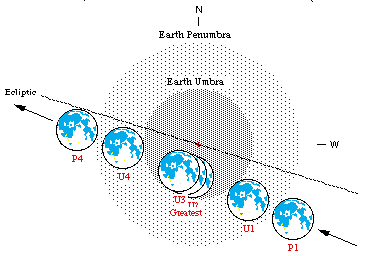 so lunar North is at the top, instead of the rotated disc one
sees when observing at the 47° North latitude of my site. This
rectification of the images makes it more clear the Moon is
crossing the southern edge of the Earth's umbra, as shown in
this chart extracted from
Fred Espenak's
data sheet
for the eclipse. Image processing was performed with
the
Netpbm
toolkit,
The Gimp,
and
Jasc Paint Shop Pro.
so lunar North is at the top, instead of the rotated disc one
sees when observing at the 47° North latitude of my site. This
rectification of the images makes it more clear the Moon is
crossing the southern edge of the Earth's umbra, as shown in
this chart extracted from
Fred Espenak's
data sheet
for the eclipse. Image processing was performed with
the
Netpbm
toolkit,
The Gimp,
and
Jasc Paint Shop Pro.
This was a very bright eclipse. Observers estimate the magnitude of the Moon at mid-eclipse as -3.5, which is about four times brighter that the eclipse of May 16, 2003 (which I didn't observe because it was only partially visible in Europe and I was clouded out to boot). Eclipses where the Moon crosses the edge of the umbra tend to be bright, but this one was bright even for an edge crossing. The "man in the Moon" was clearly visible to the unaided eye throughout totality, and lunar features were easily seen through binoculars. The eclipsed Moon had a coppery colour--the images below appear more red than my recollection of the visual appearance.
Below are 26 of the best images, chosen to show the progress
of the eclipse from near the start of the umbral eclipse
through the end of totality when deteriorating atmospheric
conditions caused me to pack it in. Click on any of these reduced
images to view the full resolution image in a separate window.
Eclipse Animation
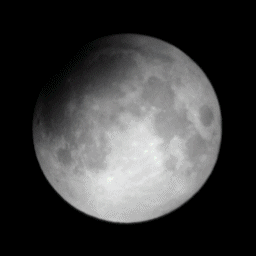
|
To avoid distracting frame-to-frame shifts in brightness and
colour balance, I have adjusted the intensity of all the
partial eclipse images to be comparable to one another and
forced them to grey scale. The individual still images above
are, however, "what the camera saw"--they have not been
colour or brightness adjusted. The animation was assembled,
optimised, and output with Jasc Animation Shop.
Lunar Eclipses: 2001 to 2020
Astronomy Resources at Fourmilab
- The Three Inner Planets
- Viewing Venus in Broad Daylight
- Naked Eye Sun-Spotting
- Solar System Live
- Your Sky
- Earth and Moon Viewer
- Solar Eclipses: 1999, 2001, 2008, and 2010
- Transit of Mercury, May 2003
- Transit of Venus, June 2004
- Comets: Hyakutake and Hale-Bopp
- Fourmilab Home Page
by John Walker
November 2003
All images in this document are in the public domain and may be used in any manner without permission, restriction, attribution, or compensation. Back links to Total Lunar Eclipse: November 2003 are welcome.
